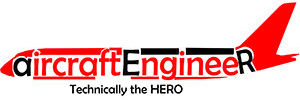Easa part 66 module 2 – Physics
EASA PART 66 MODULE 2 PHYSICS consists of basic to intermediate level of physic. The regulation demand the B1 candidate to have deeper understanding of physics than the B2 candidate. However the Later modules like Module 8 , module 11, module 15 module 16 and module 17 requires more understanding of basic physics to understand the operational theory of certain systems. So it is adviceable to have a good understanding of physics. You might need to memorize few theories , principals and few formulas.

Syllabus of EASA part 66 – Module 2
2.1 Matter
Nature of matter: the chemical elements, structure of atoms, molecules
Chemical compounds.
States: solid, liquid and gaseous;
Changes between states.
2.2 Mechanics
2.2.1 Statics
Forces, moments and couples, representation as vectors;
Centre of gravity;
Elements of theory of stress, strain and elasticity: tension, compression, shear and torsion;
Nature and properties of solid, fluid and gas;
Pressure and buoyancy in liquids (barometers).
2.2.2 Kinetics
Linear movement: uniform motion in a straight line, motion under constant acceleration (motion under gravity);
Rotational movement: uniform circular motion (centrifugal/ centripetal forces);
Periodic motion: pendular movement;
Simple theory of vibration, harmonics and resonance;
Velocity ratio, mechanical advantage and efficiency.
2.2.3 Dynamics
(a) Mass;
Force, inertia, work, power, energy (potential, kinetic and total energy), heat, efficiency.
(b) Momentum, conservation of momentum;
Impulse;
Gyroscopic principles;
Friction: nature and effects, coefficient of friction (rolling resistance).
2.2.4 Fluid dynamics
(a) Specific gravity and density.
(b) Viscosity, fluid resistance, effects of streamlining;
Effects of compressibility on fluids;
Static, dynamic and total pressure: Bernoulli’s Theorem, venturi.
2.3 Thermodynamics
(a) Temperature: thermometers and temperature scales: Celsius, Fahrenheit and Kelvin;
Heat definition.
(b) Heat capacity, specific heat;
Heat transfer: convection, radiation and conduction;
Volumetric expansion;
First and second law of thermodynamics;
Gases: ideal gases laws; specific heat at constant volume and constant pressure, work done by expanding gas;
Isothermal, adiabatic expansion and compression, engine cycles, constant volume and constant pressure, refrigerators and heat pumps;
Latent heats of fusion and evaporation, thermal energy, heat of combustion.
2.4 Optics (Light)
Nature of light; speed of light;
Laws of reflection and refraction: reflection at plane surfaces, reflection by spherical mirrors, refraction, lenses;
Fibre optics.
2.5 Wave Motion and Sound
Wave motion: mechanical waves, sinusoidal wave motion, interference phenomena, standing waves;
Sound: speed of sound, production of sound, intensity, pitch and quality, Doppler effect.
The study of physics is important because so much of life today consists of applying physical principles to our needs. Most machines we use today require knowledge of physics to understand their operation. However, complete understanding of many of these principles requires a much deeper knowledge than required by the JAA and the JAR-66 syllabus for the ‘B’ licence.
A number of applications of physics are mentioned in this chapter and, whenever you have learned one of these, you will need to be aware of the many different places in aeronautics where the application is used. Thus you will find that the laws, formulae and calculations of physics are not just subjects for examination but the main principle on which aircraft are flown and operated.
Physics is the study of what happens in the world involving matter and energy. Matter is the word used to described what things or objects are made of. Matter can be solid, liquid or gaseous. Energy is that which causes things to happen. As an example, electrical energy causes an electric motor to turn, which can cause a weight to be moved, or lifted.
Questions for MODULE 2 can be straight forward, mathematical and even analytical based on theories and principals. Module Question paper most like to have 30 questions for CAT A or 50 questions for CAT B. All are multi choice questions.
EASA Part 66 Module 2 questions.
Eg:
Enjoy learning and good luck.
references
